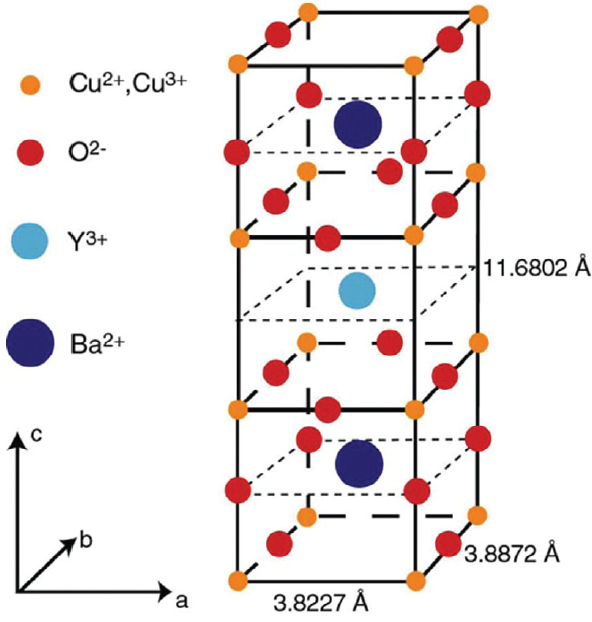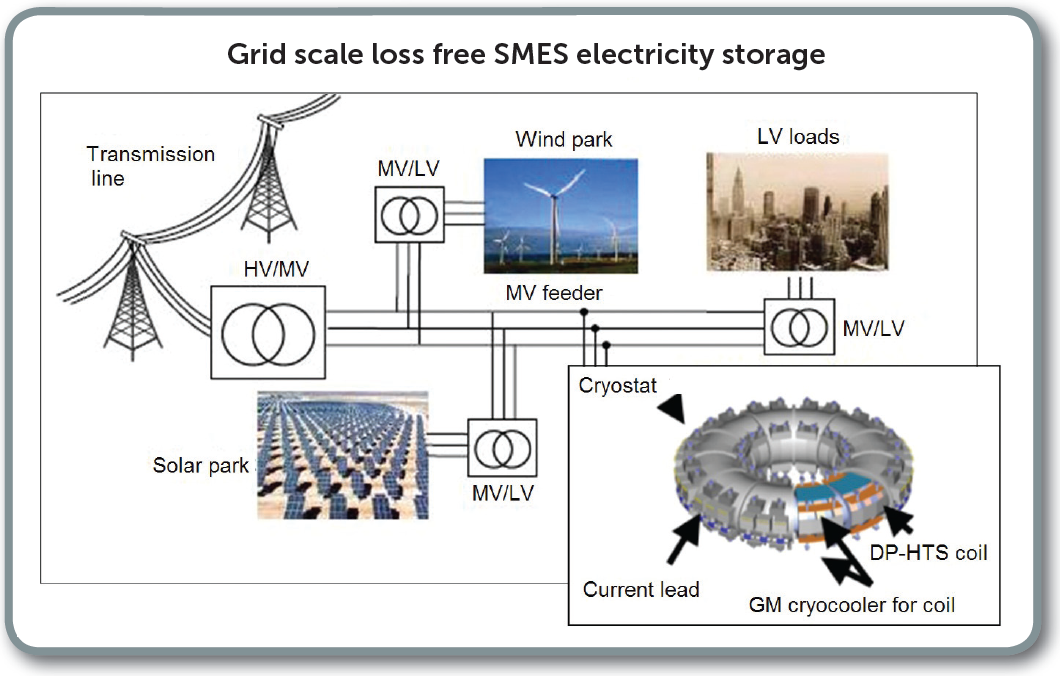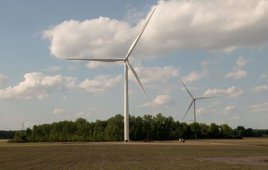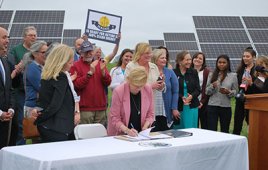Imagine a world in which electrical power transmits without loss, electrical equipment operates without electrical loss, and electricity use generates no heat. This is the promise of high-temperature superconductivity.
It means it would be possible to connect isolated wind and solar generation assets to distant loads through loss-free transmission cables, real time grid-scale electricity storage linking generation and demand, and powerful, small and light direct-drive wind generators
An introduction
Superconductivity is the transmission of electricity without electrical loss and without generating heat in operation. Low-temperature superconducting (LTS) wire using liquid helium and operating near absolute zero has existed since the 1950’s. It’s high cost to own and operate limits its use to MRI and imaging devices, and other high energy physics.

Dr. Paul Chu at the University of Houston discovered the material YBa2Cu3O7-X (YBCO), an inorganic ceramic. Its unit cell crystal structure is shown. The material is superconducting in liquid nitrogen at 77 degrees K.
Understanding and commercializing superconductivity has long been considered one of the top goals in physics. The 1987 Nobel Prize was awarded to Bednorz and Muller for discovering a new class of ceramic-like superconducting materials. In that year Dr. Paul Chu at the University of Houston discovered the material YBa2Cu3O7-X (YBCO), which was superconducting at liquid-nitrogen temperature (77°K) and hence was called a high temperature superconductor (HTS). This discovery opened the possibility for wide-spread commercial use. The commercialization of high-temperature superconductivity will be comparable to any of the major technological advances of the last 100 years.
Government and industry have been focused on making HTS a commercial reality for the past 20 years. My company has been involved in HTS advances through development of a wire-fabrication technology that can be the low-cost breakthrough that will commercialize HTS wire and change the way the world uses electricity.
Worldwide, more than 30% of generated electricity is lost in transmission and inefficient equipment. Eliminating even some of that would mean less electricity generation for the same effective work, which results in lower fuel consumption and fewer pollutants in the air and water. It is like finding a vast new energy reserve without mining for coal or importing oil from politically sensitive areas.
The wire
There are three functional layers in the MetOx HTS wire system. The first is the metallic substrate that supports and gives strength to the wire. It also has atomic order that allows depositing atomically ordered thin films including the HTS layer on it. The second layer, a buffer is necessary due to the high temperatures required for the deposition of the atomically ordered HTS layer which under such high temperatures would be subject to interdiffusion of metal substrate atoms thereby contaminating the HTS layer. The third layer is the current carrying HTS layer, which is YBCO.
The atomically-ordered growth of the HTS wire components has been the principal challenge faced by HTS wire developers. This challenge has been met through development of a cost-effective deposition technique–metal oxide chemical vapor deposition (MOCVD). While MOCVD is a known method of thin-film deposition in the semiconductor arena, licensed technology at the University of Houston and further MetOx development has modified the process for deposition 10 times faster than conventional ceramic thin-film deposition methods. Because each layer in the HTS wire must be perfectly atomically ordered, and wire requires thousands of atomic layers to reach a thickness of 1 micron or more, deposition speed (microns/minute) is critical to creating a cost effective commercial product.

The SolidWorks model shows one of two 30-ft long (not bench scale) MetOx prototype production lines currently producing short wires for testing and in prototype equipment. Full-scale production systems will each produce 2,000 km of wire annually.
In competing architectures, the deposition of buffer layers represents the most costly steps of the complete wire system. The material described here is the only one using the cost-efficient modified MOCVD process for critical buffer deposition. This technology has an additional benefit of allowing for product insertion directly from air. This has resulted in the development of a continuous air-to-air production process for MetOx wire.
Production is done in a normal manufacturing environment so no clean room is required. These air to air, reel-to-reel designs result in high use rates because the system starts up and shuts down in periods much shorter than that required by competitors. What’s more, the new developments are modular and can be added or removed to meet specific needs with respect to geometry and current capacity.
How wind benefits
Power transmission using YBCO high temperature superconducting wire in underground dc cables will significantly change the power grid and allow connecting wind and solar power plants that may be far from existing grids. When carrying dc current, superconducting wire has zero loss, regardless of length and power rating. This allows lower voltage and higher-current transmission levels. Buried cables eliminate the need for wide right-of-ways resulting in less cost and easier permitting along existing right of ways.
High fault tolerance makes a more stable grid and low impedance relives congestion. For comparison, a 1,000 mile aluminum 1GW line will have a 6.4% loss which equates to $560 million per year HTS saving at $0.10/kwh.
Light generators up to 10 MW
Wind-power generators wound from YBCO high temperature superconducting wire will reduce generator weight and volume by more than 50%. Multi-pole designs will allow direct-drive generation eliminating need for troublesome gearboxes. The US Department of Energy is currently sponsoring design work for 10 MW and larger direct-drive generators.

An SMES system provides another way to store power generated but not needed. It’s made with coils of superconducting wire. HV, MV, LV = high, medium, and low voltages. The cryostat is the cooling enclosure.
Large coils wound from YBCO high temperature superconducting wire can store electricity with near perfect efficiency in Superconducting Magnetic Energy Storage (SMES) systems. Multiple SMES coils will allow MW scale storage and the real possibility of storing off-peak generation for on-peak use. SMES systems can charge quickly, store for long periods of time at high efficiency, and discharge quickly like a capacitor or slowly like a battery. WPE
By: Louis Castellani, President, Metal Oxide Technologies, www.metox.biz
Filed Under: Uncategorized




